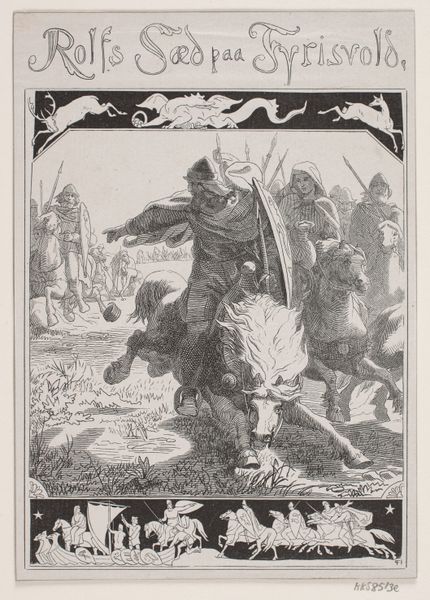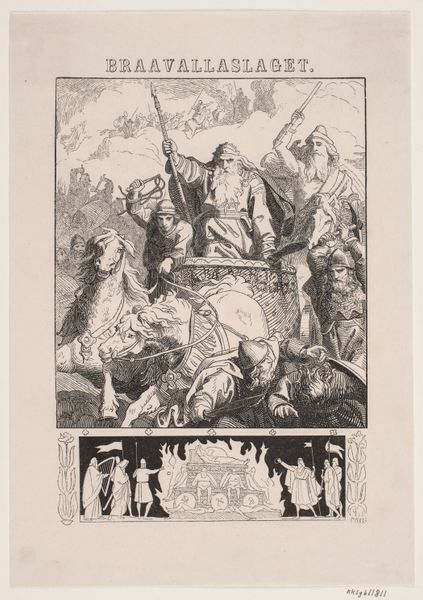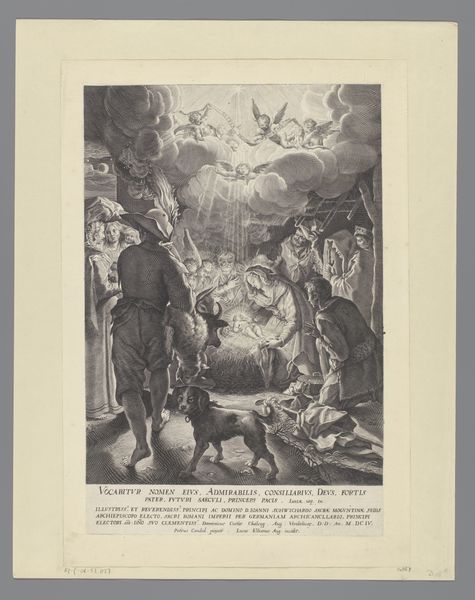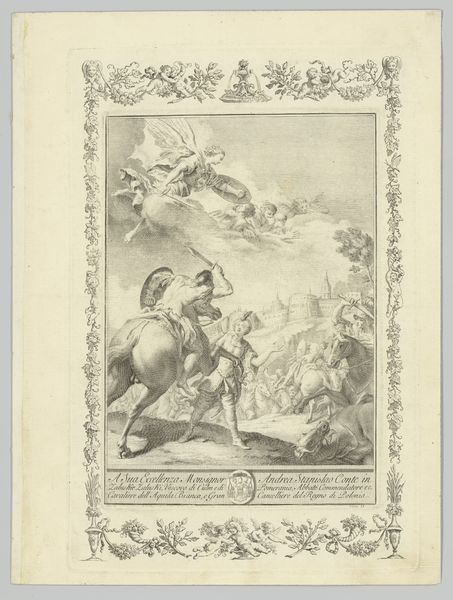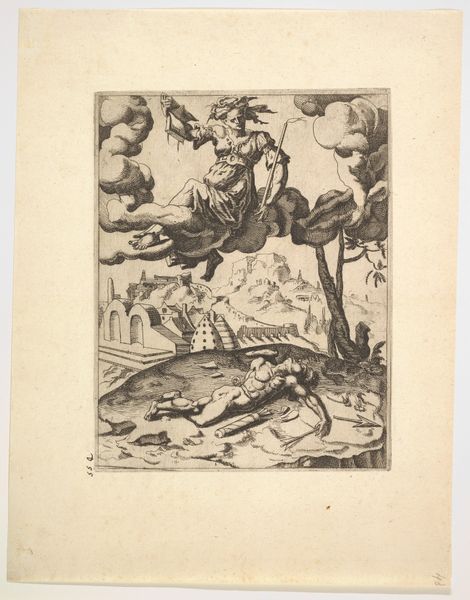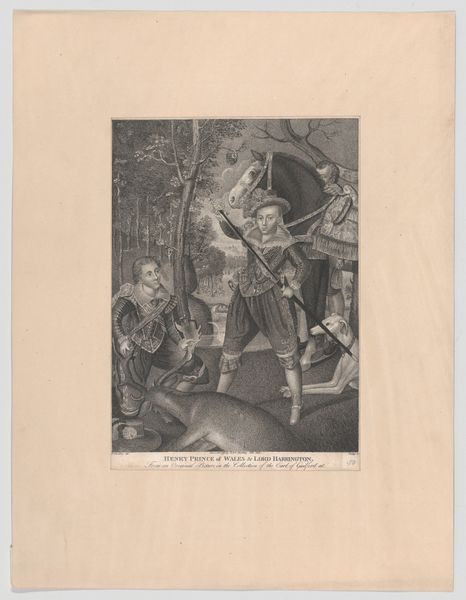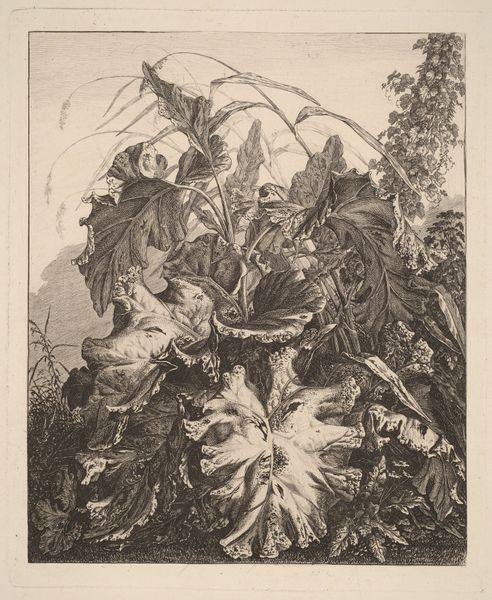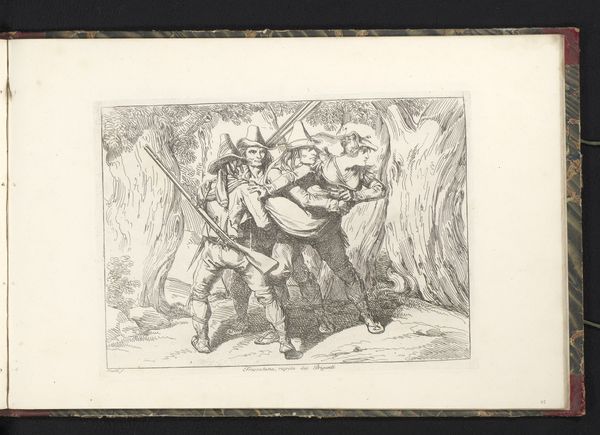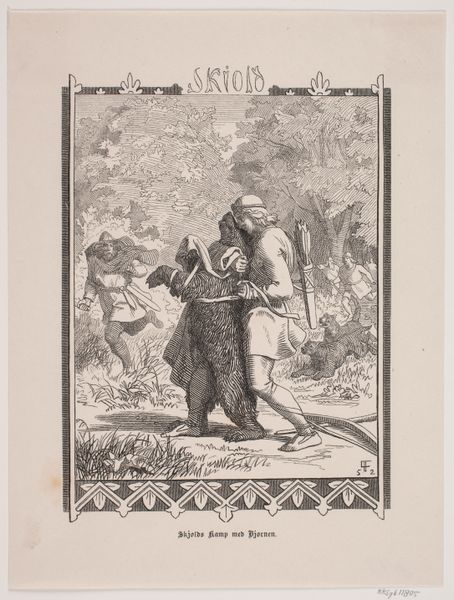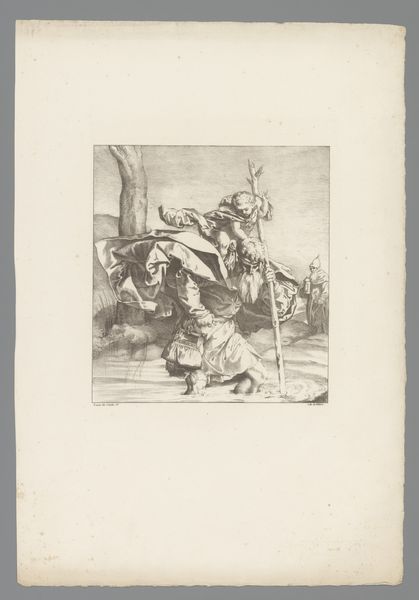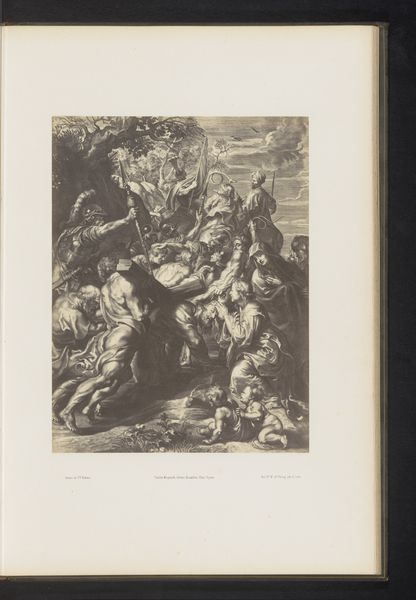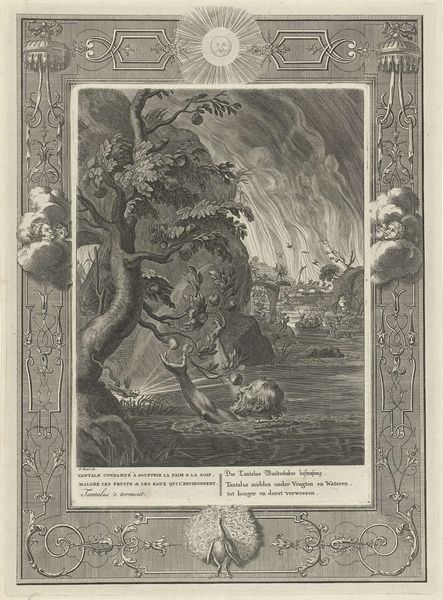
Dimensions: 205 mm (height) x 147 mm (width) (bladmaal)
Curator: The piece we’re looking at is "Rolf sad på Fyrisvold" by Södergren, created in 1852. It’s a woodcut, a type of printmaking. Editor: Thanks. It feels… powerful. All those armed figures, the horses charging. There’s definitely a strong heroic mood, but I am not so sure of what’s actually going on. How do you interpret this work, given its context? Curator: Considering its creation in 1852, it's crucial to view it within the burgeoning currents of nationalism and Romanticism sweeping Europe. Södergren taps into an idealized, constructed past, specifically Norse sagas and legends. Look at how the leader on horseback directs his men. Does his pose seem empowering? Is it perhaps oppressive and colonial? Editor: Hmm, that's an interesting angle. It does seem pretty confident but also… like, he's claiming territory, right? And those decorative elements at the top and bottom… are those also about power? Curator: Exactly. These elements serve to both elevate the scene, framing the main action. Also, take into account how woodcut as a medium carries its own historical weight. Woodcut was accessible, a medium of the people, think of broadsides and political prints. Its revival during the 19th century speaks to an interest in democratizing art, connecting to a wider audience, potentially with nationalistic goals. Do you see that reflected in its stylistic choices? Editor: Yes, the bold lines and graphic quality are so striking! It makes me think about how stories like this contribute to our understanding – and maybe our mis-understanding – of history and cultural identity. Curator: Precisely. This print, ostensibly celebrating a historical moment, invites us to question whose history is being told and how. Editor: I see how understanding the socio-political background can transform a simple image into something deeply thought-provoking. Curator: It’s about connecting visual language with the times, a powerful tool for examining the relationship between art, identity, and power structures.
Comments
No comments
Be the first to comment and join the conversation on the ultimate creative platform.
